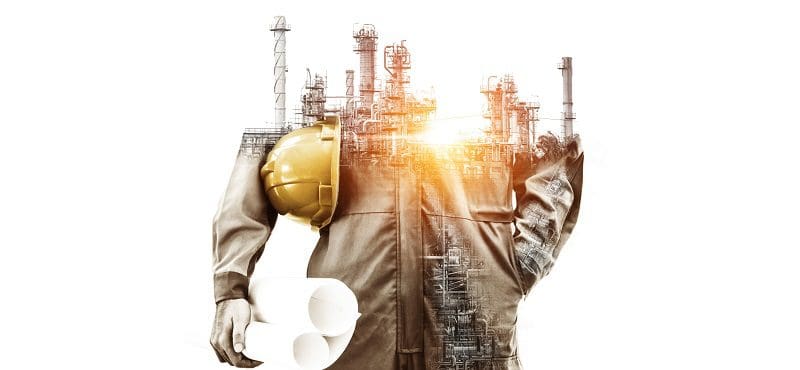If you’ve been keeping an eye on the oil and gas industry over the last few years, you may have noticed significant changes. The latest technologies have opened up new frontiers in oil exploration and production and opportunities for energy companies to lower costs and increase profits.
In some ways, just like big oil and gas companies, small businesses are also using cheap VPN service providers to improve private access to their investments. Virtual private networks or VPNs help them stay incognito while checking out their oil farms and resources, which may be what you need. As digital technology improves lives, these are what it has done in the oil and gas industry:
- Digital Oilfield Technology
Digital oilfield technology uses digital technology to improve the efficiency and safety of oilfield operations. It involves using real-time software and data from sensors on devices like pumps, valves, and pipelines to get a clear picture of what’s happening in an oil or gas well.
Digital oilfield technology is a growing field that offers companies many benefits like improved safety through efficient monitoring services. This means they can detect problems earlier, which improves response time when things go wrong.
It also increases efficiency since they know what’s happening at all times. With this, they don’t waste any time or resources on tasks that aren’t necessary. They also get to lower the cost of operation when they can see precisely their operation costs and make adjustments where necessary.
This way, they’ll focus on what’s profitable and neglect what’s not. If they need to assess their investments privately, they can scramble IP addresses and monitor their oil and gas wells without government officials or unwanted individuals sniffing around. Unprotected internet protocol (IP) addresses can be an unsecured backdoor that unauthorized actors can take advantage of.
- Enhanced Oil Recovery Techniques
Enhanced oil recovery techniques are used to extract oil from old oil wells. Water injection and gas injection are two examples of enhanced oil recovery techniques today used to increase pressure, or the volume of oil, extracted from an oil well.
Water injection involves pumping water into an underground reservoir. They pump water to increase pressure and force cruder up through the well into production storage tanks. The higher the pressure, the more they can draw crude oil out of the ground than would be possible through natural flow. This method is commonly employed when production rates have declined significantly. Production could decline due to limited resources available for extraction in nearby areas where it’s been drilled before (known as reservoir depletion). But technology changes the narrative.
- Automation Technologies
Automation technologies are a vital enabler of digital oilfield technology, enabling the development of new technologies. The use of automation in the oil and gas industry isn’t new—it’s been used for years to improve efficiency and safety. Automation has been around for decades as computer-aided design (CAD) was introduced into the engineering process many years ago.
Also, real-time data systems were introduced to monitor drilling operations before this century. By the early 2000s, machine learning algorithms had been incorporated into many drilling optimization programs, which are still used today. However, advanced technologies like artificial intelligence (AI) software provide predictive analytics on operational performance.
AI is also used as remote monitoring sensors that detect leaks or other issues before they become catastrophic problems. In addition, it’s useful as automated drill rigs give companies remote control capabilities. All these achieve one thing: They improve efficiency and flexibility in the oil and gas industry.
- AR And VR To Improve Training And Hazard Management In Oil And Gas Industry
Besides serving as effective training tools in the oil and gas industry, augmented reality (AR) and virtual reality (VR) technologies can also be used to improve hazard management. Using these technologies, companies can train workers to deal with emergencies and hazardous events.
For example, workers can practice dealing with fires by wearing VR headsets that simulate a fire condition to understand the risks of entering certain locations or responding to specific conditions.
Many areas of the oil and gas industry depend on training new employees. While many schools offer traditional training programs, new technologies make it easier for companies to provide safety training in more engaging and efficient ways.
- Advanced Analytics And Big Data Management
Big data is a critical component of the digital oilfield. It refers to a collection of data that’s too large to be processed or analyzed by conventional database management tools. Big data analytics examines large volumes of data to identify hidden patterns and unknown correlations and predict future events.
Collecting and analyzing massive quantities of real-time information enables operators to optimize production. They also get to maximize economic performance from their assets. Advanced analytics help companies better decide how many wells should be drilled, where they should be drilled, when they can be drilled safely with minimal environmental impact, and what kind of equipment is best suited for each job, even how much it’ll cost to do so.
- 3D Modeling And 4D Seismic Imaging
3D seismic imaging is a geophysical technique used to image the Earth’s subsurface. It uses seismic waves reflected (backscattered) from subsurface structures or boundaries, such as faults or salt domes.
By combining thousands of 2D surveys that have been recorded across one or more areas, 3D models can be created showing hydrocarbon traps and other structures in great detail. This is extremely useful for oil & gas exploration companies. It allows them to predict where they should drill wells to find commercially viable hydrocarbon deposits.
- Industrial Internet Of Things In the Oil And Gas Industry
The internet of things (IoT) refers to a network of devices connected to the internet. IoT enables data collection and exchange, which enterprises can use to improve efficiency, productivity, and safety.
By collecting real-time data on operations across their oil and gas businesses, companies can make better decisions faster. They can also use IoT devices in their equipment or processes to monitor and control them remotely.
For example, A company may want to monitor its facilities via sensors that collect temperature readings throughout different plant parts. This way, they’ll know when something goes wrong before it becomes a big problem. Or maybe they want some lights on at night because someone works late? No problem. They can turn on those lights with an app that controls their system over WiFi.
Conclusion
The digital transformation of the oil and gas industry is well underway. Its use of technologies, including AI, machine learning, and IoT, improve efficiency and safety in the oil and gas business. So, if you’re an owner of a company, it’s essential to embrace digital transformation to keep up with the competition and make the most of this exciting technology.
Oil and gas operations are commonly found in remote locations far from company headquarters. Now, it's possible to monitor pump operations, collate and analyze seismic data, and track employees around the world from almost anywhere. Whether employees are in the office or in the field, the internet and related applications enable a greater multidirectional flow of information – and control – than ever before.



![Why Enhanced Geothermal Energy Could Be Your Next Smart Investment [2025 Guide]](https://b1006343.smushcdn.com/1006343/wp-content/uploads/2025/06/Why-Enhanced-Geothermal-Energy-Could-Be-Your-Next-Smart-Investment-2025-Guide-500x280.jpg?lossy=2&strip=1&webp=1)





